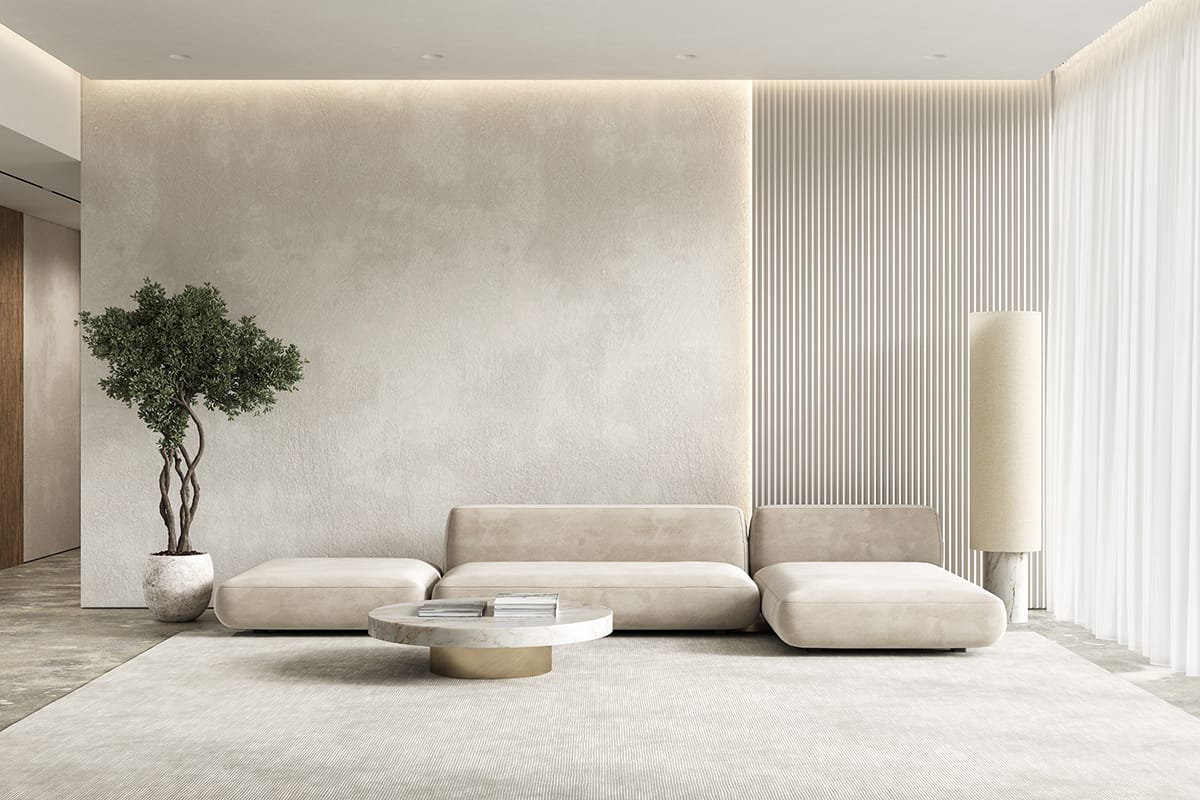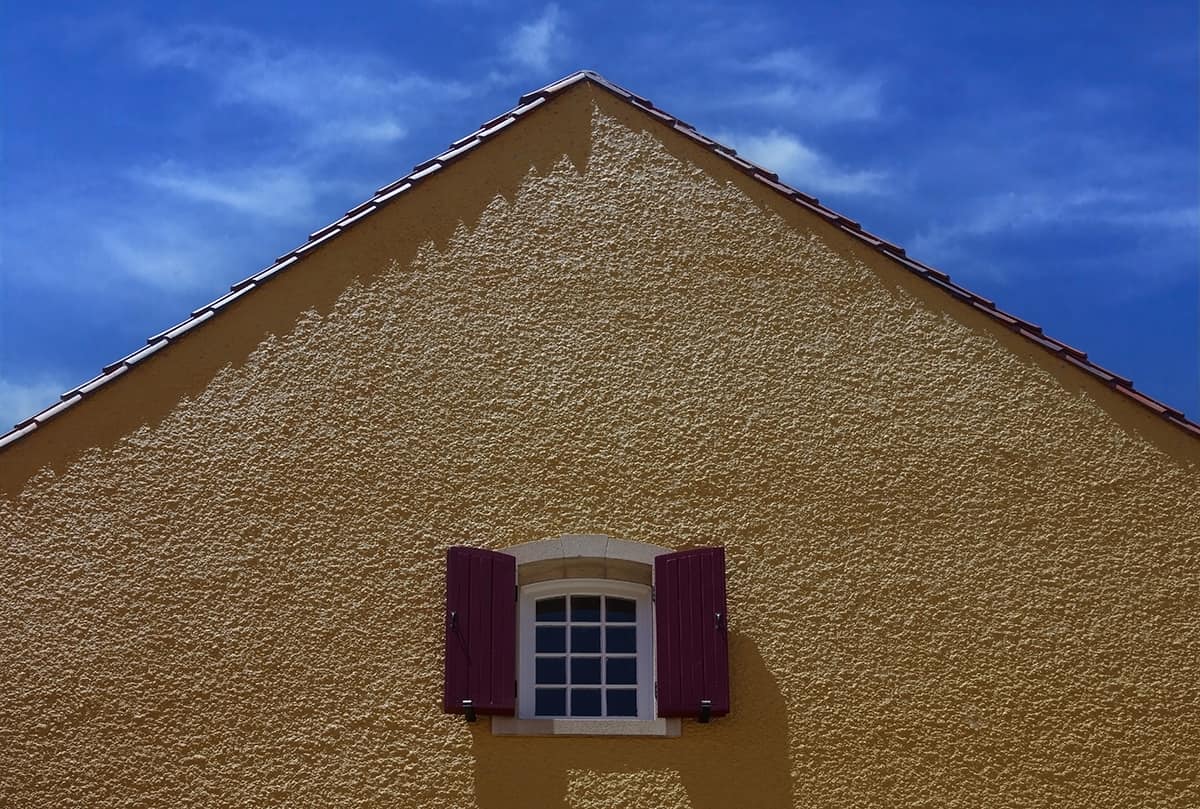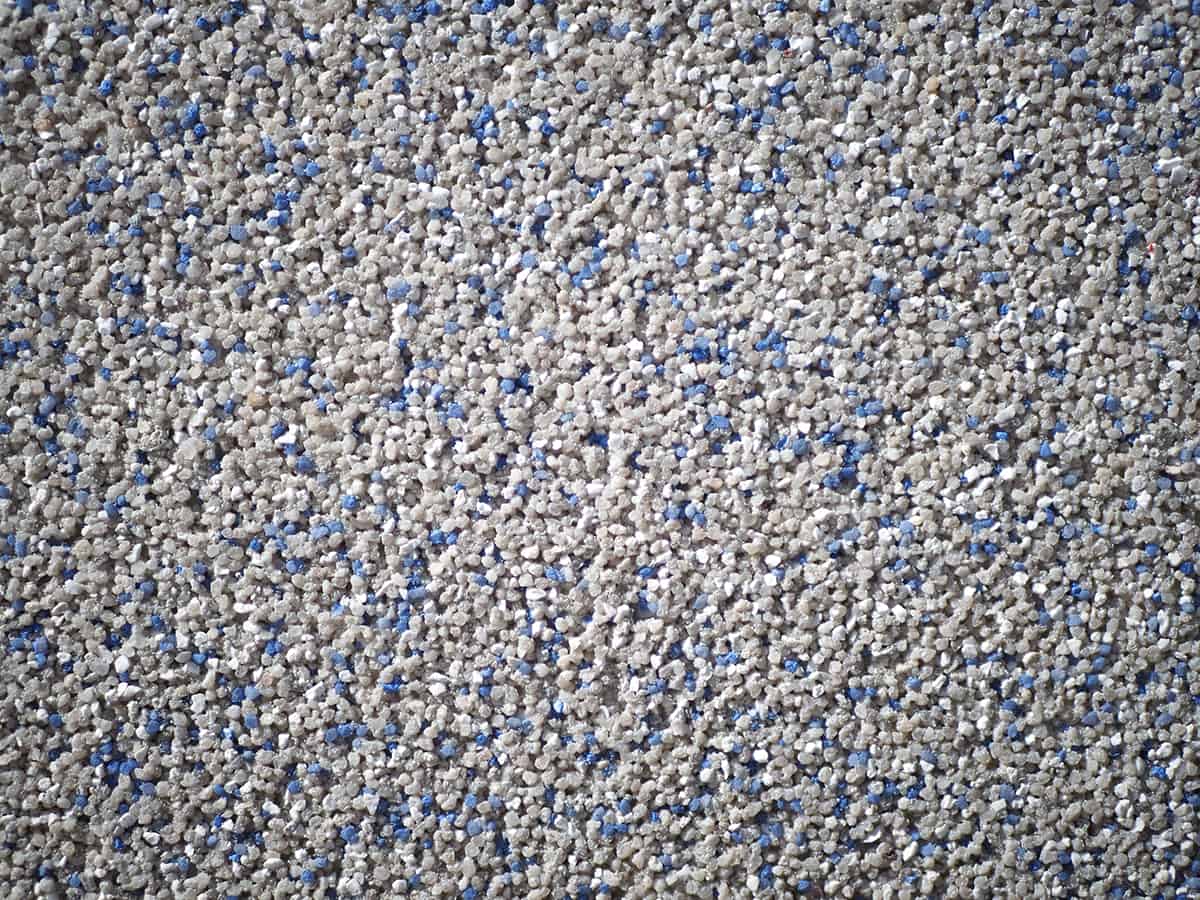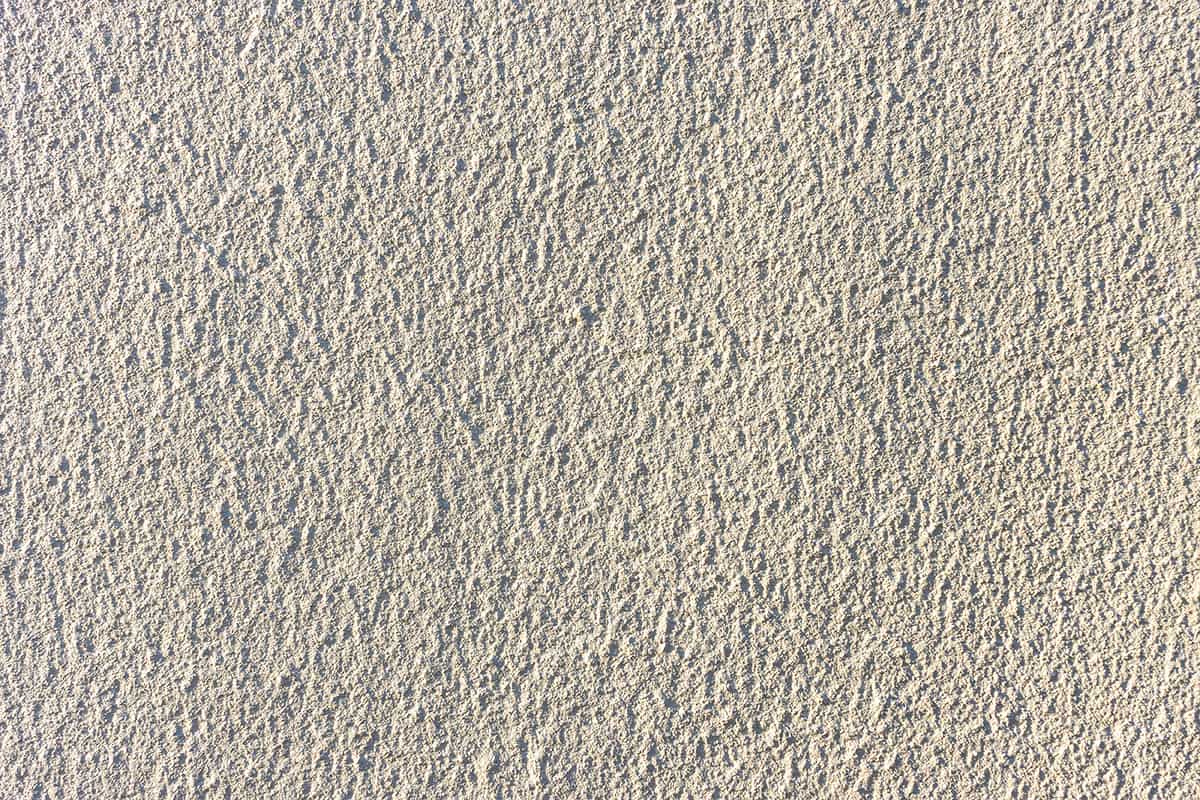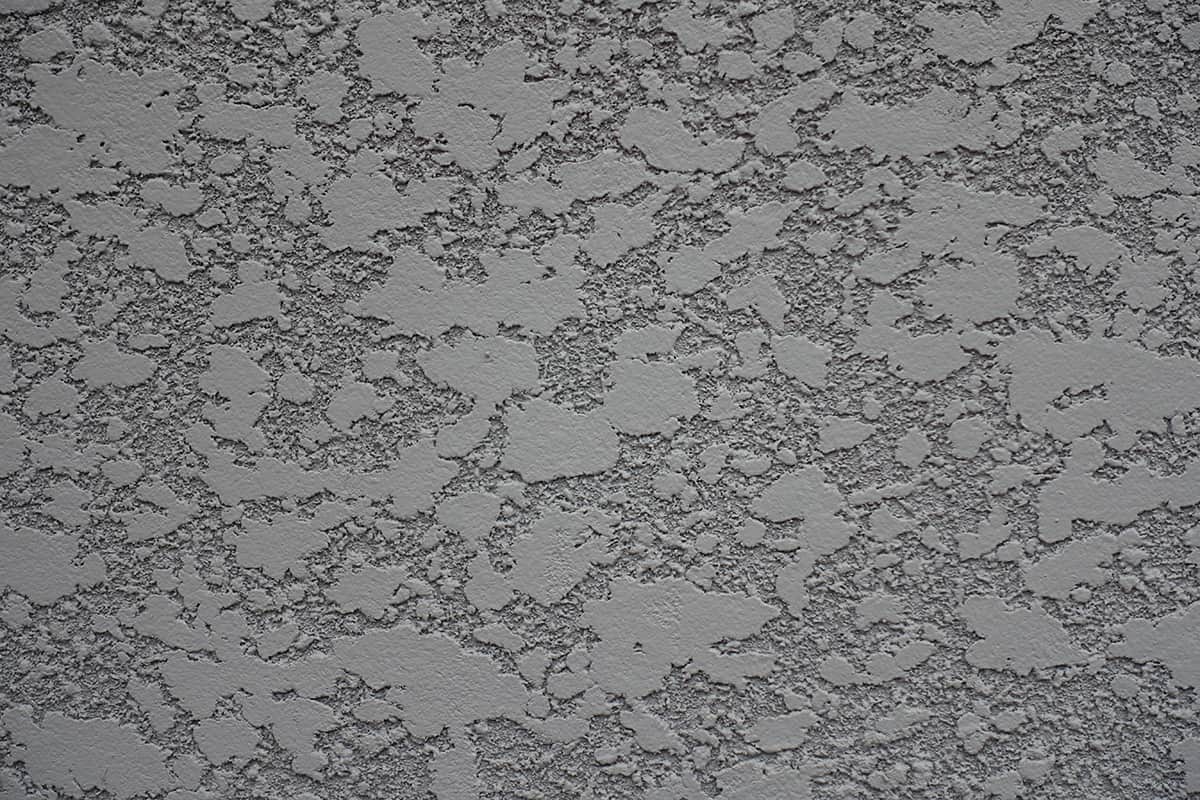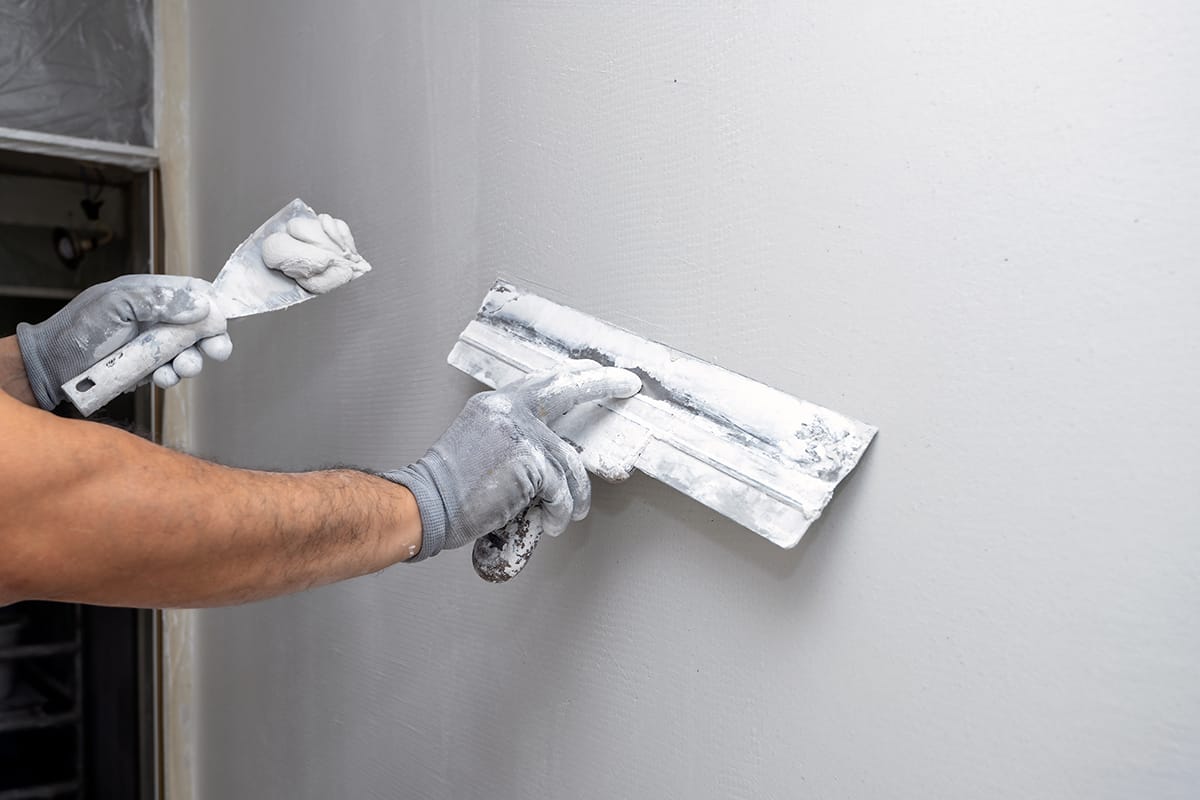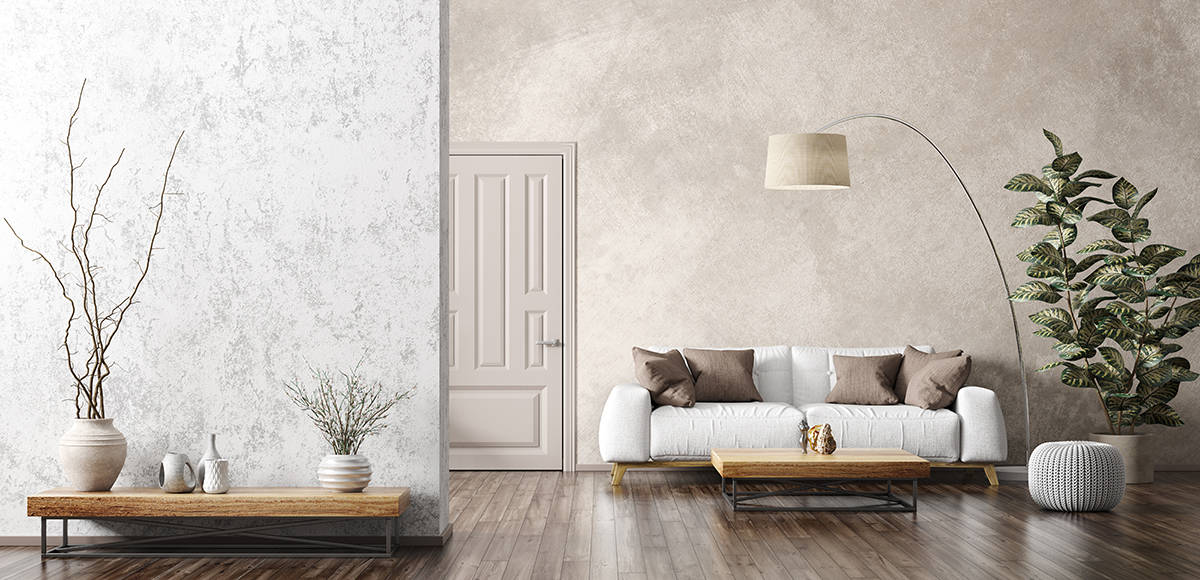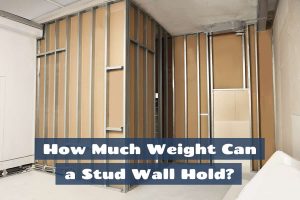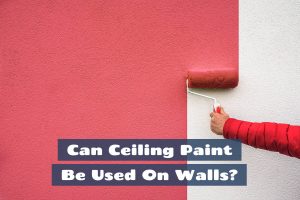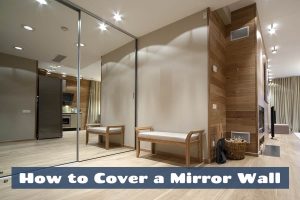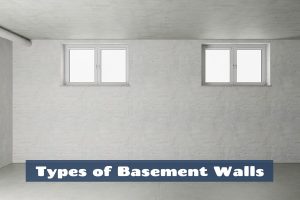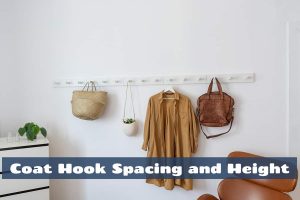Stucco is a type of exterior finish used on both residential and commercial buildings. In this article, we will delve into the variety of stucco types and finishes, as well as the pros and cons of using stucco in your home.
Main Types of Stucco
Traditional Stucco
Traditional stucco is made from a mixture that includes sand, lime, and water. In most modern applications, Portland cement is added to improve durability. When stucco is made predominantly from lime, it is easier to mold and shape. Cement-based applications are generally considered to be harder to mold. However, these do give a stronger, harder finish.
Cement stucco mixtures must be applied over a mesh base. Otherwise, the application will be at a much higher risk of cracking. Acrylics and fiberglass can be added to traditional stucco to increase its durability as an alternative to cement.
Synthetic Stucco
Synthetic stucco does not use cement or lime as its base and instead is formed from acrylic resin. The resin used is water-resistant, and it can be applied directly onto foam board, so a layer of mesh does not need to be installed first.
Synthetic types of stucco usually dry more quickly, which can make them easier to work with. They also tend to dry more evenly than traditional stucco.
The main advantage of synthetic stucco is that it has more movement than traditional stucco. This means it can tolerate more movement from foundations settling, sudden temperature changes, or shifts in the ground before it will crack.
Types of Stucco Finishes
Sand
A sand finish on stucco is the most common finish, especially on public or commercial buildings. It is also known as a ‘float’ finish and is favored for its high coverage.
The impressive coverage means that this finish can be applied in just one coat. Application methods vary, as a sand finish can be achieved with a sprayer or a trowel. A sand finish can be used over traditional or synthetic stucco.
Dash
A dash finish over stucco is also known as ‘pebble’, ‘pebble dash’, ‘and ‘roughcast’. Achieving a good application usually takes three coats, resulting in a rough, gritty look. You can give your stucco a more unique style using this finish by adding crushed gravel or shells to the mixture.
The dash finish is usually sprayed on and can be used on both traditional and synthetic stucco. You can choose between a heavy, medium, or light grain, depending on how rough you want the look to be. Unlike some of the smoother finishes, the dash is great for hiding or disguising cracks.
Santa Barbara
Santa Barbara is a traditional finish of stucco, which is not compatible with synthetic stucco applications. It gives a rustic look similar in appearance to adobe, which is a type of brick made from earth and organic materials. In fact, ‘adobe’ translates in Spanish to mean ‘mudbrick’.
Santa Barbara stucco has a very smooth finish, which is achieved with fine sand. You can use colored sand to get different finishes. The Santa Barbara coating has a simple and rustic look that is popular for villas, but the main drawback is that it can show cracks in the stucco very easily.
English
English stucco is a good choice if you anticipate that there are going to be frequent patches of damage that need repair because English stucco can be patched quite easily.
The English stucco finish is popular with older buildings or anyone who wants to create an antique look. It is made up of curved brush strokes that give a layered appearance. This is a forgiving stucco finish that has quite a rough, rustic appeal.
Lace and Skip
This finish can be applied by hand or with a sprayer. It requires multiple layers, with a rough first layer followed by a second and potential third layer that are both finer. Lace and skip is one of the most popular finishes of stucco, especially amongst residential properties.
In fact, when most people imagine stucco, this is the finish they will envision. The effect of this finish looks like a clouded lace, which is great for hiding imperfections. Another reason the lace and skip finish is so popular is that it is one of the easiest to repair.
Cat
The Cat stucco finish is also known as the ‘California’ finish. Cat stucco has a smart and elegant look, achieved with a mixture of smooth and rough patches. The rough patches vary in size or shape and are called ‘inclusions’. Builders find the Cat finish to be quite demanding because it is labor-intensive and can require many layers.
The first few coats can be sprayed on or troweled on, and the last coat will need to be finished by hand. Cat-finished stucco can be customized using different colors or textures and is usually best suited to fine stucco applications. This finish is prone to hairline cracking, and unfortunately, it can be difficult to patch.
Smooth
Smooth finished stucco is one of the most difficult to achieve because it needs to be completely flat and uniform. Any flaws will be obvious in a smooth stucco, so you must use a reputable, experienced builder. Smooth stucco is becoming increasingly popular, especially in modern and new-build homes.
The finish achieved with smooth stucco resembles velvet. It is soft to the touch and has a sleek, streamlined appearance. It works best on synthetic types of stucco, but it can also be applied to traditional fine-grained stucco.
Worm
Also known as ‘putz and swirl’, the worm stucco finish is created with the addition of large pieces of aggregate, such as chunks of gravel, which are mixed into the stucco before it is applied. When the stucco is spread across the surface with a trowel, the gravel will leave indents behind, creating a swirling, grooved finish.
Every stucco application finished in the worm style will be unique due to the way it is applied. This is another labor-intensive stucco finish that can take a long time to achieve; as such, you can expect to pay a premium to do the extra hours of labor from your builders. Worm-finished stucco can be very difficult to repair because the unique grooves are hard to recreate exactly.
Stucco Pros and Cons
Pros
Low maintenance
Stucco is low maintenance, requiring just an annual clean with a pressure hose to remove dirt that can become trapped in the small grooves or dents. You can paint stucco if you want to freshen up the look of it, but this isn’t essential.
Fire resistant
Stucco is fire-resistant, making it increasingly popular in communities that have been ravaged by wildfires in recent years. It can be applied to wood or brick structures, with a one-inch thick layer of stucco making the home one-hour firewall rated. This means the stucco can hold fire on one side of the wall before it gets through to the other side of the wall.
Pest resistant
Stucco is pest-resistant, so if you have experienced problems with termites in previous wooden siding exteriors, then stucco might sound very appealing.
Versatile
Stucco is so versatile, thanks to the range of finishes available, so you can find a type of stucco that works for the style of your home. You can have stucco finished in any color and applied to wooden or brick-built structures.
Long-lasting
Most stucco applications come with a 20-year warranty, but if stucco is well looked after, then it can last for as many as 50 years. If you want to finish your home with an exterior that will stand the test of time, then stucco presents a good option.
Insulating
The multiple layers used to create stucco create a shell around the home that acts as an additional insulator. This can help keep heat inside the home during the cooler months to aid in reducing heat loss and lowering energy bills, and it can also help to keep the home cooler during warmer times of the year.
The insulation provided by stucco also helps to soundproof the home, keeping noises from the street from disturbing anyone inside the house.
Cons
Not suited to wet climates
Stucco is water resistant and good at repelling water, however, it isn’t recommended for consistently wet climates such as humid climates or those with extreme rainfall. When faced with continuously high levels of moisture, stucco can become oversaturated and the moisture will penetrate the layers beneath the stucco, creating issues with dampness and mold.
Expensive
The materials used to create stucco are relatively inexpensive, however, you will need experienced builders to apply stucco, and this can make the job quite expensive. If you have good DIY skills, then applying your own siding could work out to be a cheaper option.
Can crack or chip
Stucco is brittle, which means it is prone to cracking or chipping when there is a shift in the ground below. This could be caused by the foundations of the home settling, soil shifting, or minor to major earthquakes.
Hard to repair
If stucco develops cracks or chips, it will need to be repaired. Repairs can be expensive, and if not carried out properly, the repairs can look like odd patches that don’t blend in.
